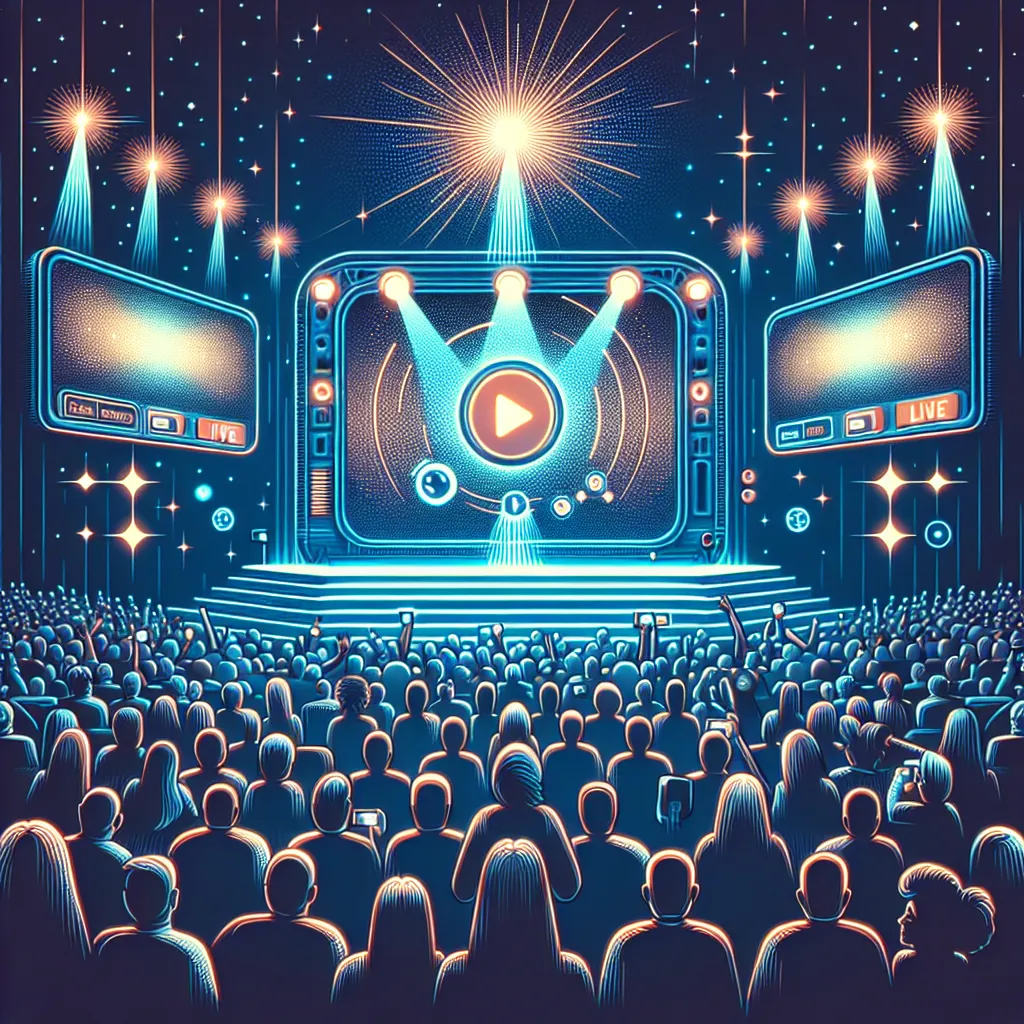The Rise of Live Streaming: A Historical Perspective
In recent years, the live streaming landscape has undergone a remarkable transformation, heralding a new era of digital media consumption. The rise of live streaming platforms can be traced back to the early 2000s, with the emergence of technologies that enabled individuals to broadcast live video content over the internet. The historical perspective of live streaming reveals its humble beginnings, marked by experimental broadcasts and limited audience reach.
As internet infrastructure advanced, so did the capabilities of live streaming platforms, leading to the proliferation of services that cater to a diverse array of content creators and consumers. The evolution of live streaming has been intertwined with technological innovations, such as improved video compression algorithms and the widespread adoption of high-speed internet connections, which have facilitated seamless real-time video delivery.
Moreover, the integration of social media with live streaming has propelled its popularity to unprecedented levels, as platforms leverage the interactive nature of live content to engage audiences in new and immersive ways. This symbiotic relationship between live streaming and social media has given rise to a vibrant ecosystem where users can participate in live events, share their experiences, and connect with like-minded communities in real time.
However, the ascent of live streaming has not been without its challenges. Issues related to content moderation, copyright infringement, and ensuring the safety and privacy of users have prompted platforms to implement robust measures to mitigate these concerns. Additionally, the monetization of live streaming remains a complex terrain, with platforms experimenting with various models, such as advertising, subscriptions, and virtual gifting, to sustain the economic viability of the ecosystem.
Looking ahead, the future of live streaming platforms is poised to be shaped by evolving consumer behaviors, advancements in immersive technologies like virtual and augmented reality, and the convergence of live streaming with other forms of media, presenting a dynamic landscape that is ripe with both opportunities and challenges.
Innovations in Live Streaming Technology and User Experience
The Evolution of Live Streaming Platforms: Trends and Challenges
Innovations in Live Streaming Technology and User Experience
Live streaming platforms have evolved significantly in recent years, driven by innovations in technology and a focus on enhancing user experience. One of the key trends in live streaming technology is the use of advanced video compression techniques, such as H.265/HEVC, which enable higher quality video streaming at lower bitrates. This not only improves the overall streaming experience for users with limited bandwidth but also allows for higher resolution and smoother playback on a variety of devices.
Furthermore, the integration of interactive features has revolutionized the user experience on live streaming platforms. Viewers can now engage with content creators in real time through live chat, polls, and interactive overlays, creating a more immersive and participatory viewing experience. Additionally, advancements in augmented reality (AR) and virtual reality (VR) technologies have opened up new possibilities for live streaming, offering users a more immersive and engaging experience.
Despite these exciting innovations, live streaming platforms still face several challenges. One of the major hurdles is ensuring seamless delivery of live content across different devices and network conditions. Compatibility issues and varying bandwidth constraints can affect the quality of the streaming experience, requiring constant innovation in adaptive streaming technologies to address these challenges.
Another significant challenge is maintaining the balance between user-generated content and professional productions. While user-generated live streams offer authentic and relatable content, professional productions require higher production values and robust infrastructure to deliver high-quality live events.
Overall, the evolution of live streaming platforms continues to be shaped by innovations in technology and a focus on enhancing user experience. As the industry continues to grow, addressing the challenges while leveraging new technological advancements will be crucial in shaping the future of live streaming.
Remember to optimize your SEO with keywords: live streaming, technology, user experience, innovations, challenges, interactive features, augmented reality, virtual reality, adaptive streaming technologies, user-generated content, professional productions.
Monetization and Regulation in Live Streaming Platforms
Monetization and regulation are two crucial aspects of live streaming platforms that have significantly evolved over the years. With the rise in popularity of live streaming, platforms have been exploring various monetization strategies to generate revenue. One of the prominent trends in monetization is the implementation of subscription-based models, where users can access exclusive content by paying a monthly fee. Additionally, many platforms have integrated advertising into their live streams, allowing content creators to earn revenue based on the number of views and interactions.
However, these monetization strategies have brought forth challenges in terms of regulation. As live streaming platforms continue to grow, regulatory bodies are increasingly concerned about content moderation, copyright infringement, and user privacy. This has led to the implementation of stricter regulations and standards to ensure compliance with legal requirements.
Furthermore, the global nature of live streaming platforms has presented challenges in complying with varying regulations across different jurisdictions. This has necessitated platforms to invest in robust systems for content monitoring, filtering, and moderation to ensure adherence to diverse regulatory frameworks.
In conclusion, as live streaming platforms evolve, the monetization landscape continues to shift with the adoption of new models, while stringent regulations are shaping the legal and ethical dimensions of the industry.





